Hello everyone! First of all, this blog post is a day late. I’m still in the process of moving (actually finished yesterday), and I got stuck at my old apartment with no internet. Usually, I would just go to a cafe or something, but obviously, that is out of the question right now. Anyway, I’m sorry for the delay.
Today, as we progress through my free basic cooking course, “Kitchen Clueless,” we will be learning about understanding salads. What does that mean? Well, we will take a look at different kinds of salads, dressings, and everything in between.
The salad comes in many different forms and flavours. It actually sometimes seems as though the term salad is so broad that it could mean just about anything. Really, it can. But to keep this simple, we are going to narrow this down a bit. We are going to separate this into two main categories, green salads and everything else. The meaning of green salad should be pretty obvious. It refers to any salad with a base of leafy greens such as lettuce or spinach. Everything else is…well, it’s everything else that we call a salad.
Let’s get to it. This is…
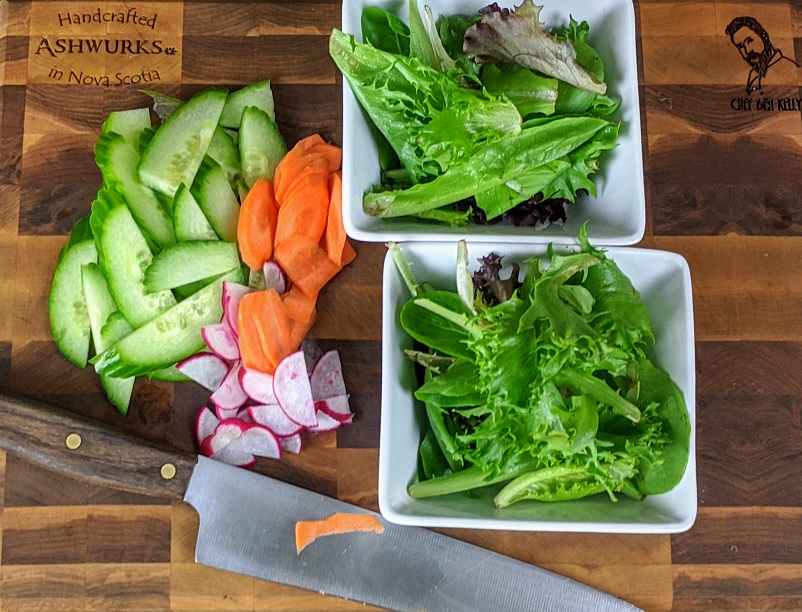
UNDERSTANDING SALADS – KITCHEN CLUELESS BASIC COOKING COURSE
Green Salads
We’ve all eaten green salads. Everything from spinach salad to Caesar salad to tossed salad falls in this category. Although those salads may make up some of the most common leafy green-based salads, they are by no means the only ones. There is a seemingly unlimited combination of greens and ingredients that can be used to create delicious green salads.
Leafy greens make up the base of our salads. As the base, they provide a lot of flavour and texture. So, the type of green we choose for our salads is actually pretty important. It sets the tone of the salad as a whole.
With so many options out there for leafy greens, it can be hard to decide which one is best for the salad we want to make. If we make the wrong choice, we could end up overpowering the other ingredients. There is also the possibility that we choose too soft greens to pair with our garnish or dressing. This can result in soggy greens.
Let’s look at some common greens and the types of dressings and garnish we can pair with them.
Baby Spinach
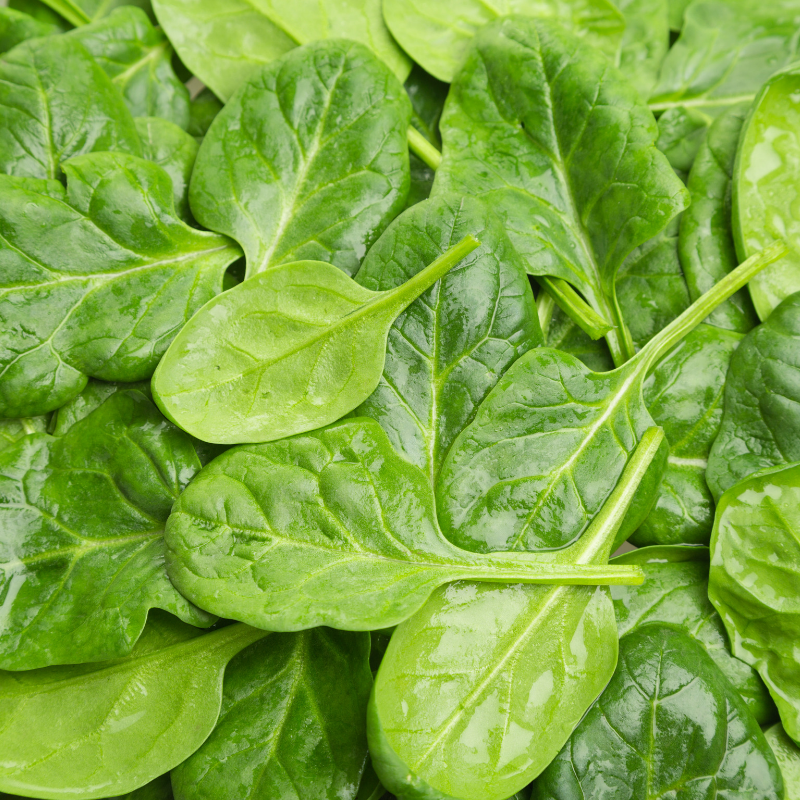
Baby spinach is a hearty green with a fairly mild flavour. This green can hold up to just about anything. It may even be served with a warm vinaigrette and garnish though this is more of an autumn-style salad.
Baby spinach does really well when balanced with sweet and salty. Sweet ingredients like fresh or dried fruit and berries, or even candied nuts work very well. Also, sweeter vinaigrettes like maple, honey Dijon, and balsamic all work very well.
Bacon is always a great choice to bring that salty element to a spinach salad. It could also come from salted nuts or slightly salty cheese like parmesan. Speaking of cheese, goat cheese and spinach are always good friends.
An example of a classic spinach salad would have spinach, red onion, bacon, egg, and poppy seed dressing. Simple, classic, and delicious. The picture below has red onion, goat cheese, apple, dried cranberry, and a maple vinaigrette.
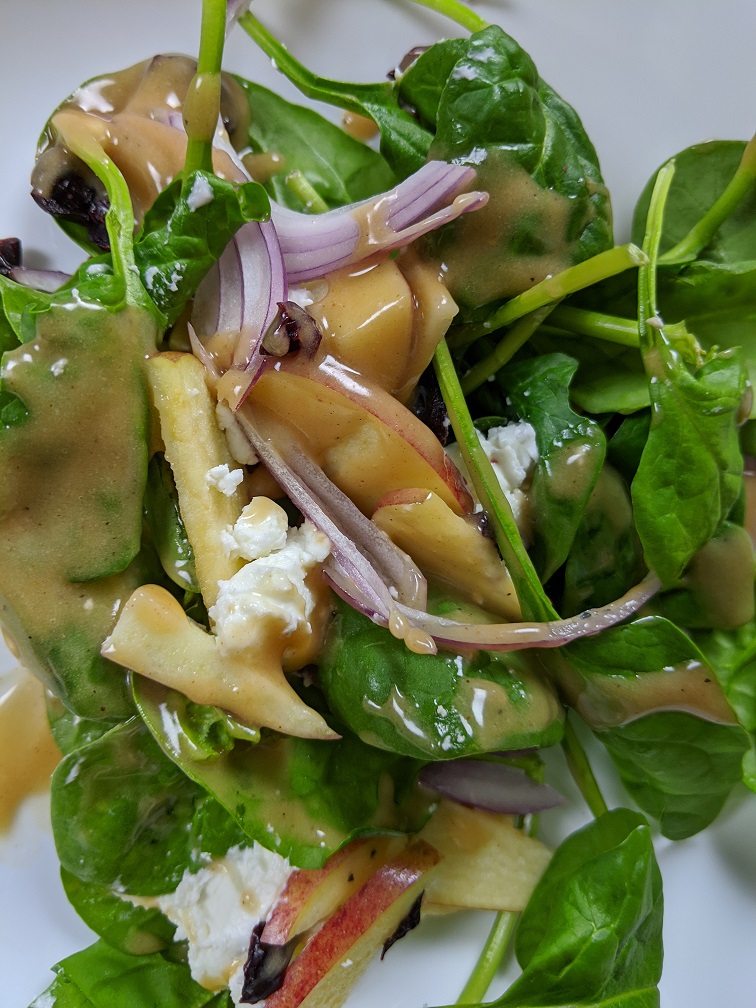
Arugula
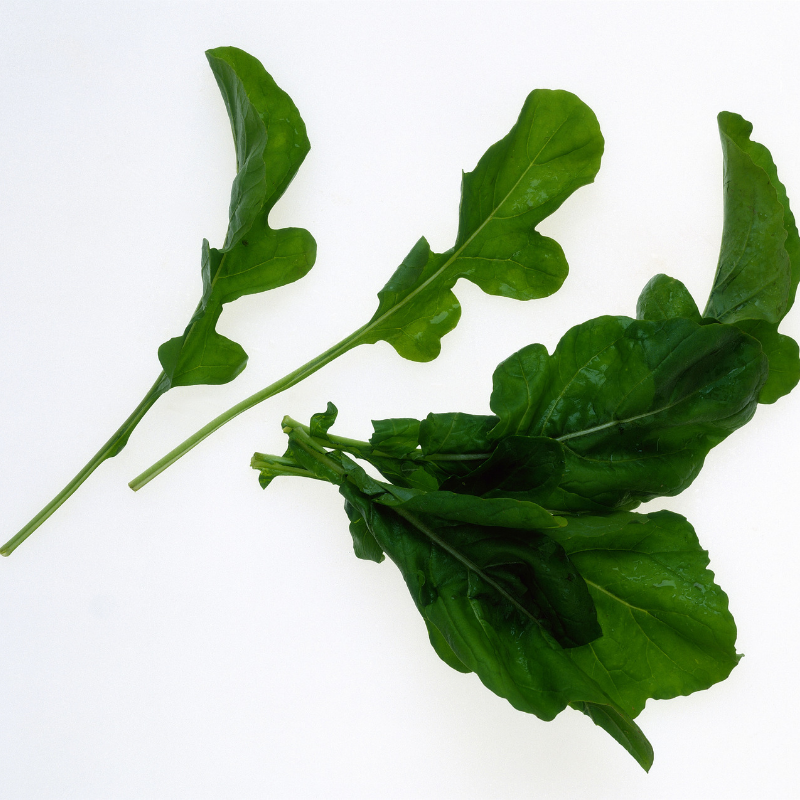
Arugula, also known as rocket, is a hearty green with a complex peppery, nutty, spicy flavour. Like spinach, arugula can hold up to just about anything. It is commonly served as part of a mixture of greens though it is delicious on its own.
Typically, salads made from arugula are very simple. This simplicity is due to the complexity of flavour coming from the arugula itself. There is no need to add a bunch of extra stuff. Having said that, an acidic vinaigrette balances that complexity very well.
Generally, I serve arugula with a simple lemon vinaigrette. To this, I add some segmented oranges, a little shaved parmesan or Asiago, and some toasted almonds. Anything along those lines will work well.
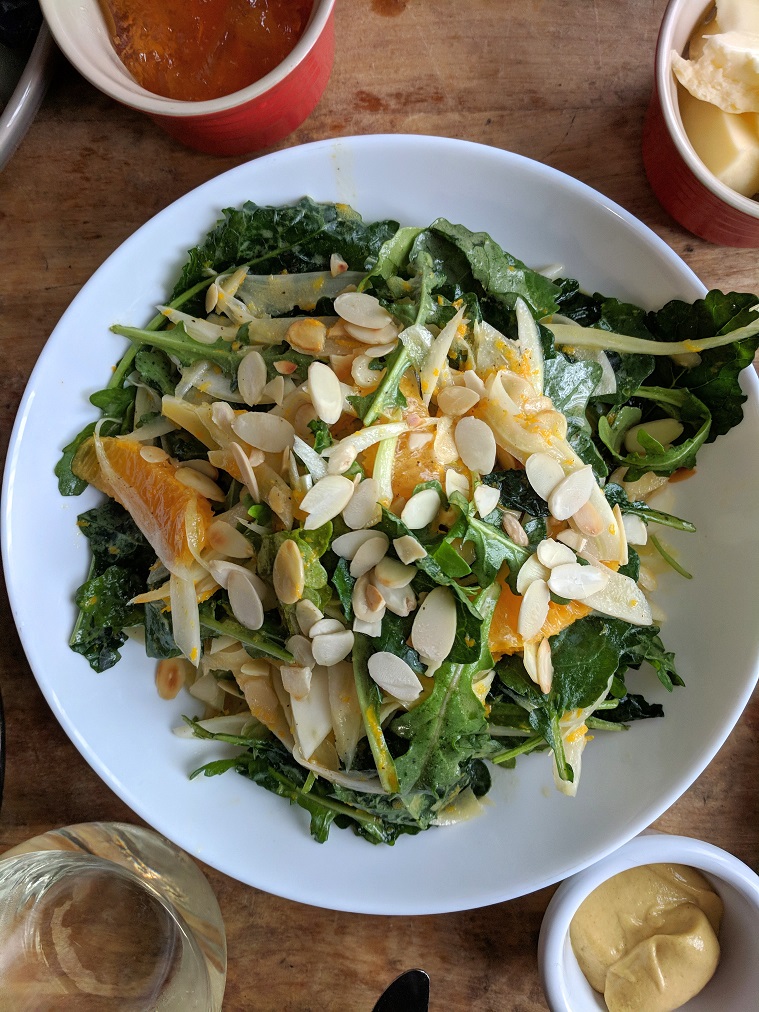
Mesclun
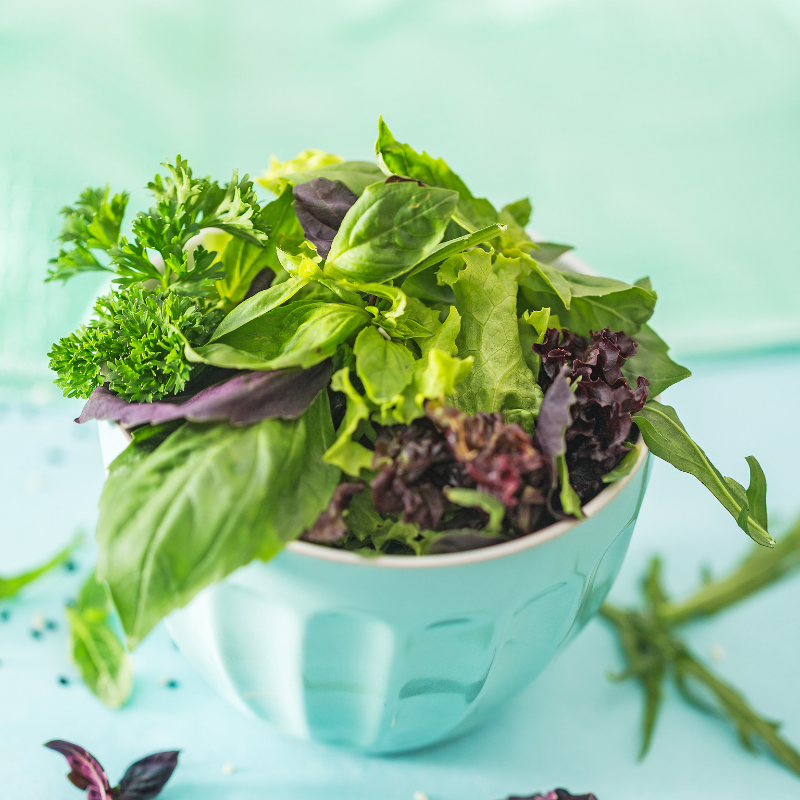
Mesclun is really just a mixture of tender baby greens. These greens are typically a little more fragile than arugula or spinach, and they have a more mild flavour. They do add a lot of colour to any salad.
The great thing about this mixture is it generally tastes great on its own with a light vinaigrette. It doesn’t really need much else. Of course, it can be used to make a salad, but it is important to be light-handed with the garnish and dressing as the greens will literally and figuratively collapse under the weight of many ingredients. A few thinly sliced or shaved fresh vegetables and a light dressing is all you need. This makes a really great garnish salad.
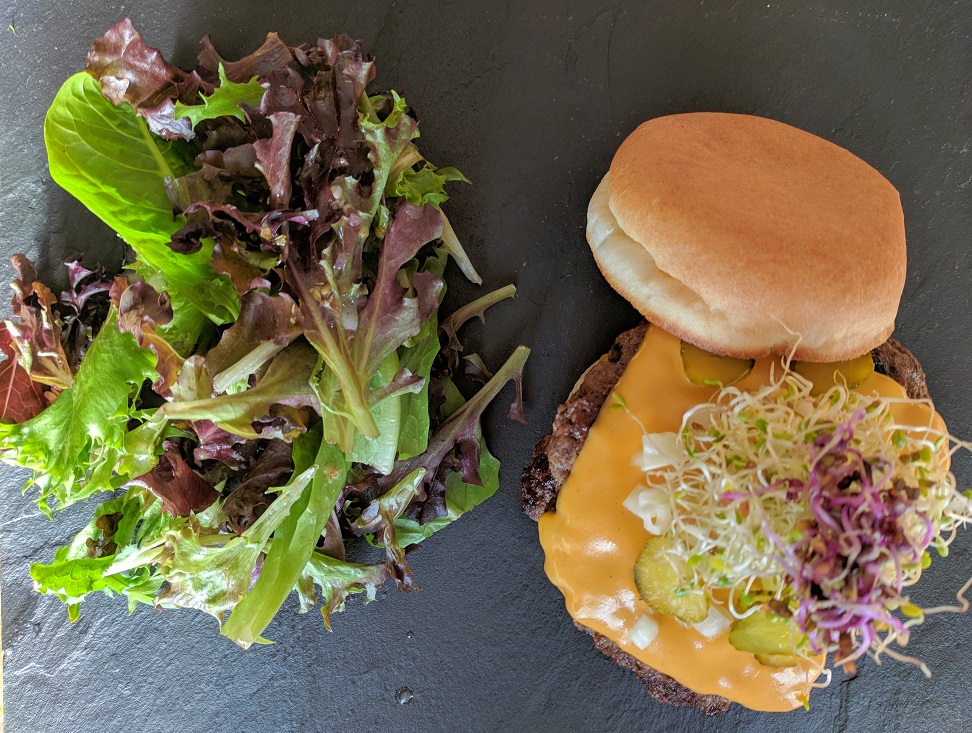
Iceberg Lettuce

Iceberg lettuce is fantastic for tossed salads. It holds up well against lots of vegetables and thick, rich dressings. Iceberg has a very mild, neutral flavour and a pleasant crisp texture that is unique and amazing.
I always think of pairing iceberg lettuce with whatever vegetables are freshest and lots of them in terms of garnish. For the dressing, generally something creamy like ranch or french. We want a dressing that will coat the lettuce and vegetables and provide a lot of flavours.
Iceberg lettuce often gets a bad rap, but I think it is kind of the rock star of the salad world for my money. To put things into perspective, mesclun would be like an excellent classical musician. Arugula would be a jazz drummer, and spinach would be a folk singer.
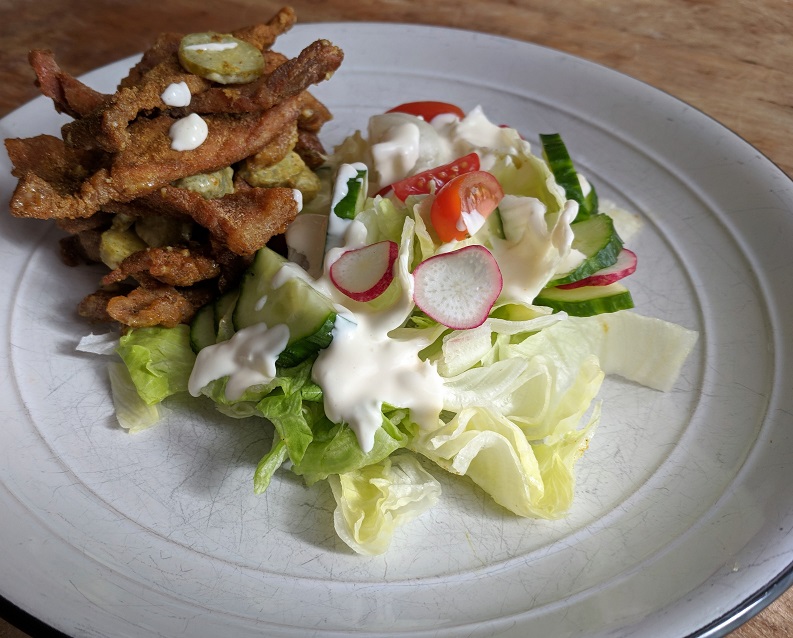
Romaine Lettuce
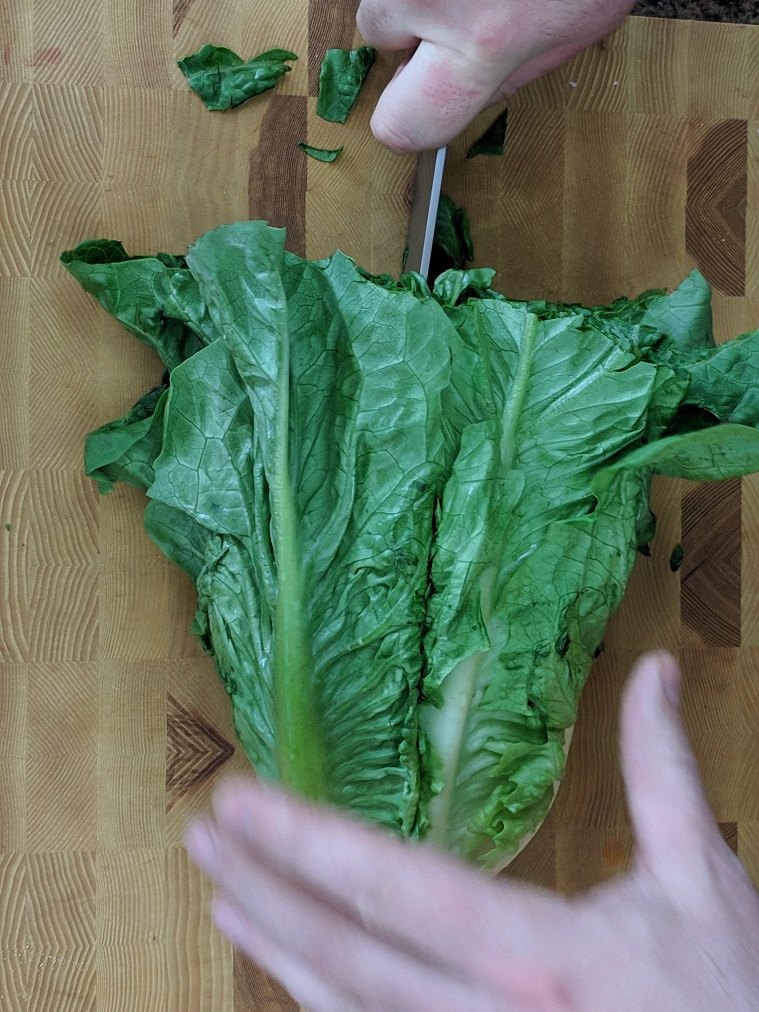
Romaine lettuce is most commonly associated with Caesar salad. This is obviously a widespread use for this lettuce, but it is not the only one. In North America, you will commonly see Romaine in Greek Salads, and it is regularly used in Middle Eastern cuisines. Romaine is surprisingly hearty lettuce and can even be cooked if desired.
Although I am a fan of Caesar salad and Greek Salad, I prefer to use romaine lettuce in bowls like a burrito bowl, shawarma bowl, or something like that. The reason is that romaine holds up well to heat. So, if I add the romaine to the bowl with hot rice, beans, chicken, some salsa, and cheese, I know that the lettuce will hold up. Really, romaine to me is just great, versatile lettuce.
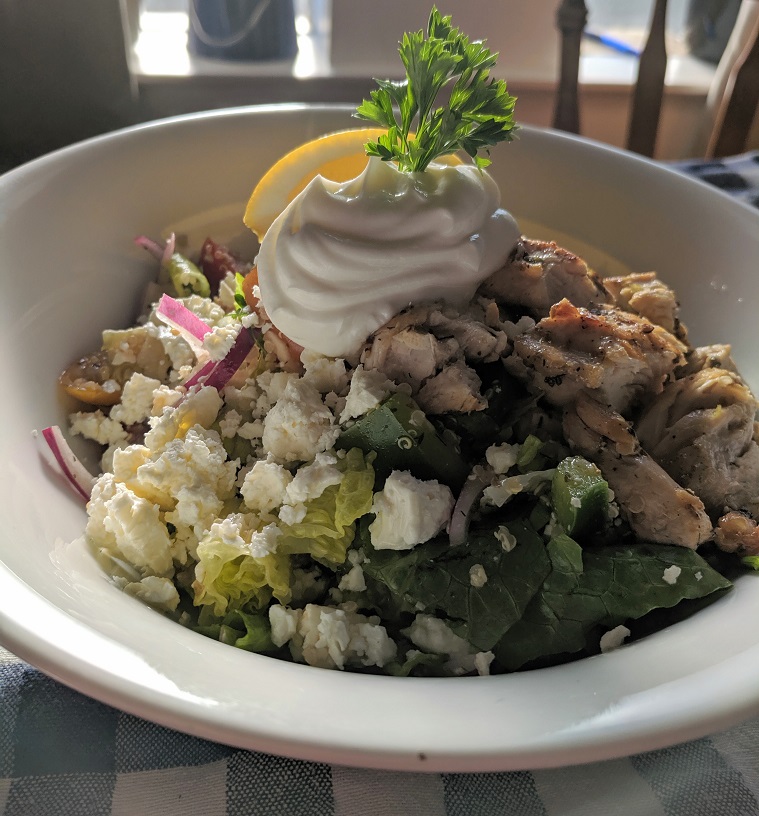
Bibb Lettuce
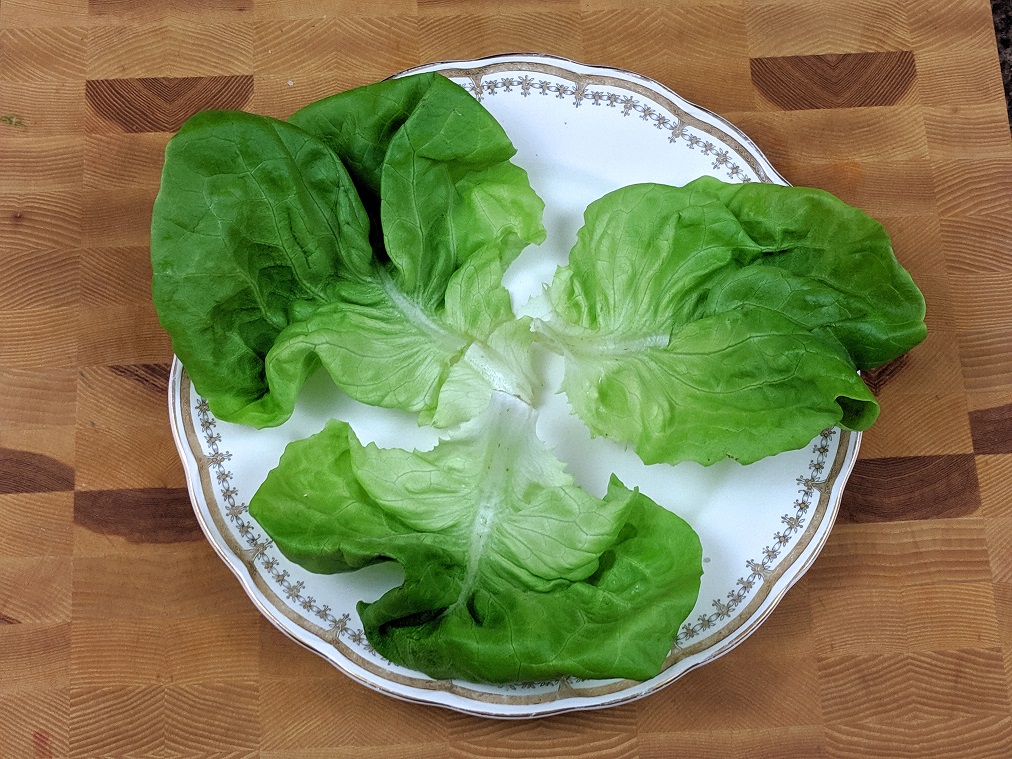
Bibb Lettuce, also known as Boston Bibb, or Butter Lettuce, has a sweet, silky flavour and a very tender texture. Generally, when used to make a salad, bibb lettuce is served whole or half, drizzled with dressing and sprinkled with garnish.
I actually prefer to use Bibb Lettuce for salad wraps like the one below. I see them more like a soft, green taco shell than for salad, though they do work for salad as well.
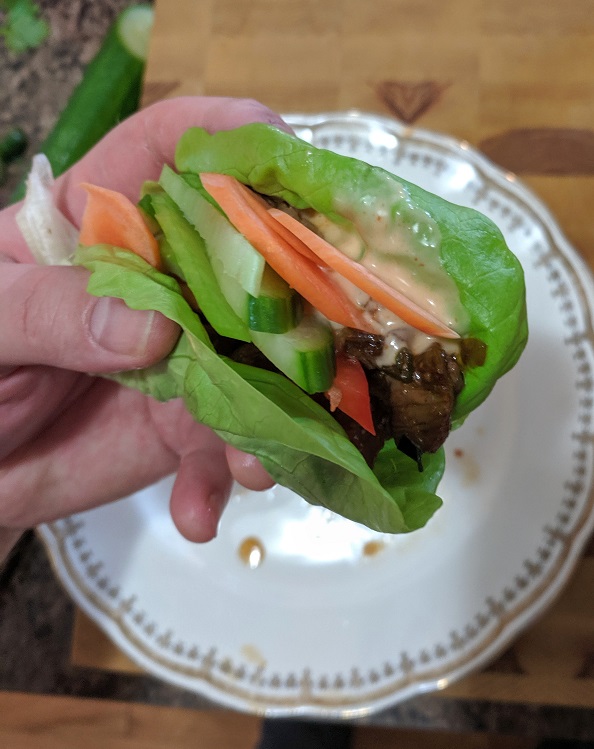
I could spend all day just talking about different greens and lettuces, but we need to move on. I think that this should give you a few good ideas and a decent starting place. I think really the key is to try different greens and experiment a little. You never know what you might fall in love with. Now, let’s take a look at some common dressings.
Salad Dressing
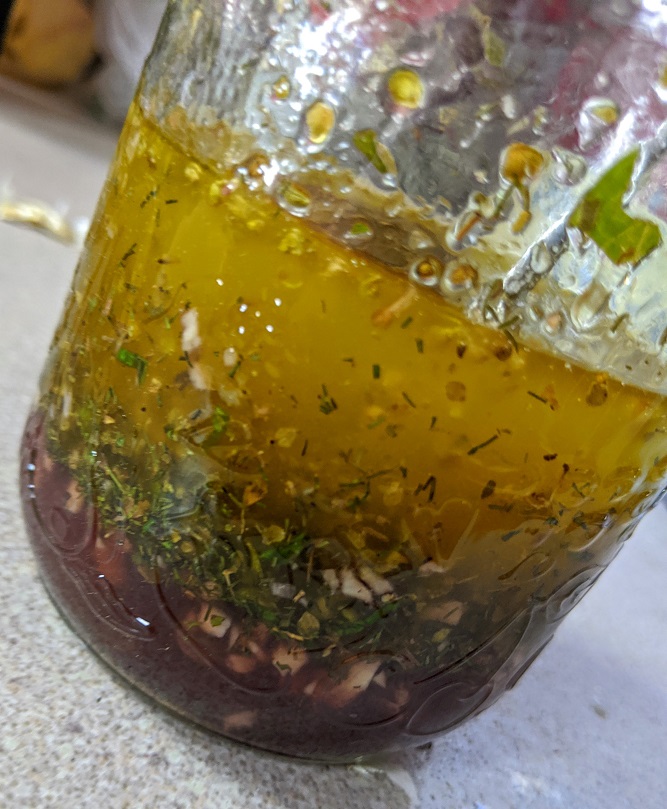
A good salad dressing should coat your salad but not make it soggy or heavy. The dressing should be vibrant and complement your salad, yet not overpower it. Choosing the right dressing for your salad is just as important as all the other ingredients. You need to find a balance of flavour. The best way to balance the flavour of a salad is to make your own dressing. It is easy, quick, cheap, and delicious. I would venture to guess that you already have all the ingredients you need to make a great salad dressing on hand. You don’t need to buy expensive ingredients. Just use what you have.
There are two main types of salad dressings. The first type is a vinaigrette which is based on vinegar and oil. The second type is egg and oil-based like Caesar Salad dressing. The two types of dressings have a lot in common. For starters, they are both emulsification of oil and another liquid. Secondly, they are both made in almost the same way. Finally, the principles behind both types of dressings are the same. There is one main difference between the two types of dressings. An egg-based dressing is permanent emulsification. A vinaigrette dressing is temporary emulsification. This means that unless you use commercial binders as they do in store-bought dressings, your vinaigrette will eventually separate. This is fine. When it does separate, and you want to use it, just give it a big shake, and it will come back together.
What is emulsification? Emulsification is a mixture of two or more liquids that usually don’t mix, such as oil and water. Emulsification is facilitated through the use of stabilizers. In the case of an egg-based dressing, the stabilizer or binder is actually the egg itself. More specifically, it is a phospholipid in egg yolks called lecithin, which acts as a binder. In a vinaigrette, ground mustard seeds or garlic can do the same thing as the egg yolk in an egg-based dressing.
As I said, the process for both types of dressing is pretty much the same. You start with your base. If you are making an egg-based dressing, this would be your eggs. You would begin with your vinegar and a stabilizer such as ground mustard or garlic for a vinaigrette. You add your oil be it olive oil, nut oil, or a neutrally flavoured oil such as canola. The key here is that you add it slowly. If you add your oil too quickly, you will over saturate your binder, and your emulsification will break. After all your oil has been absorbed, you add the rest of your ingredients, such as flavourings and seasonings. Alternatively, you can add your flavourings before your oil, but I find it better to do it after.
Vinaigrette –
When making a vinaigrette, you have a lot of options of how to flavour it. This flavouring begins with the first few ingredients. You can use different flavoured oils such as garlic oil which is a byproduct of roasting garlic. You can use nut oils or literally any other oil you choose. The same goes for vinegar. Don’t limit yourself to just white vinegar. You can use sherry vinegar, blueberry vinegar, balsamic, cider, white wine vinegar, red wine vinegar. All of these will drastically change the flavour of the vinaigrette. If you are going to use flavoured oils and vinegar, just think about how that flavour will affect the rest of your salad and the rest of the ingredients in your vinaigrette.
I have included a few recipes below for different Vinaigrettes to give you an idea of the possibilities. Once you get the hang of this and the basic understanding, you will be making your own vinaigrette recipes in no time. An important thing to note about Vinaigrettes is the ratio of vinegar to oil. This pretty much stays consistent across the board so remember this. Use 1/4 vinegar to 3/4 oil so, if you want 1 cup of salad dressing. Use 1/4 cup vinegar and 3/4 cup of oil. Stick with that ratio, add whatever else in that you want, and you will be golden.
Equipment
- Whisk
- Mixing Bowl
- Jar with lid
- Measuring Cups
Ingredients
- 1/4 cup Red Wine Vinegar
- 3/4 cup Canola Oil
- 1 tsp Dijon Mustard
- 2 tsp Honey
- Salt and Pepper to taste
Instructions
- Combine the Vinegar, mustard and honey in the mixing bowl and whisk together.
- Whisk a few drops of the oil in the vinegar mixture.
- Whisk a few more drops of the oil into the vinegar mixture.
- Add the remaining oil in a slow steady stream while constantly whisking.
- Once all the oil has been incorporated, season the vinaigrette with salt and pepper.
Ingredients
- 1/4 cup White Wine Vinegar
- 3/4 cup Canola Oil
- 2 tbsp Dijon Mustard
- 2 tbsp Honey
- Salt and Pepper to taste
Instructions
- Combine the Vinegar, mustard, and honey in the mixing bowl and whisk together.
- Whisk a few drops of the oil in the vinegar mixture.
- Whisk a few more drops of the oil into the vinegar mixture.
- Add the remaining oil in a slow, steady stream while constantly whisking.
- Once all the oil has been incorporated, season the vinaigrette with salt and pepper.
Ingredients
- 1/4 cup Balsamic Vinegar
- 3/4 cup Canola Oil
- 1 tsp Dijon Mustard
- 2 tbsp Maple Syrup
- Salt and Pepper to taste
Instructions
- Combine the vinegar, mustard, and maple syrup in the mixing bowl and whisk together.
- Whisk a few drops of the oil in the vinegar mixture.
- Whisk a few more drops of the oil into the vinegar mixture.
- Add the remaining oil in a slow steady stream while constantly whisking.
- Once all the oil has been incorporated, season the vinaigrette with salt and pepper.
Ingredients
- 2 tbsp White Wine Vinegar
- 2 tbsp Lemon Juice
- 3/4 cup Canola Oil
- 1 tsp Dijon Mustard
- 1 tsp honey
- 1 clove pureed garlic
- 2 tbsp chopped chives
- Salt and Pepper to taste
Instructions
- Combine the Vinegar, lemon juice, mustard, and honey in the mixing bowl and whisk together.
- Whisk a few drops of the oil in the vinegar mixture.
- Whisk a few more drops of the oil into the vinegar mixture.
- Add the remaining oil in a slow steady stream while constantly whisking.
- Once all the oil has been incorporated, season the vinaigrette with salt and pepper and add in the chive.
Egg Based Dressings
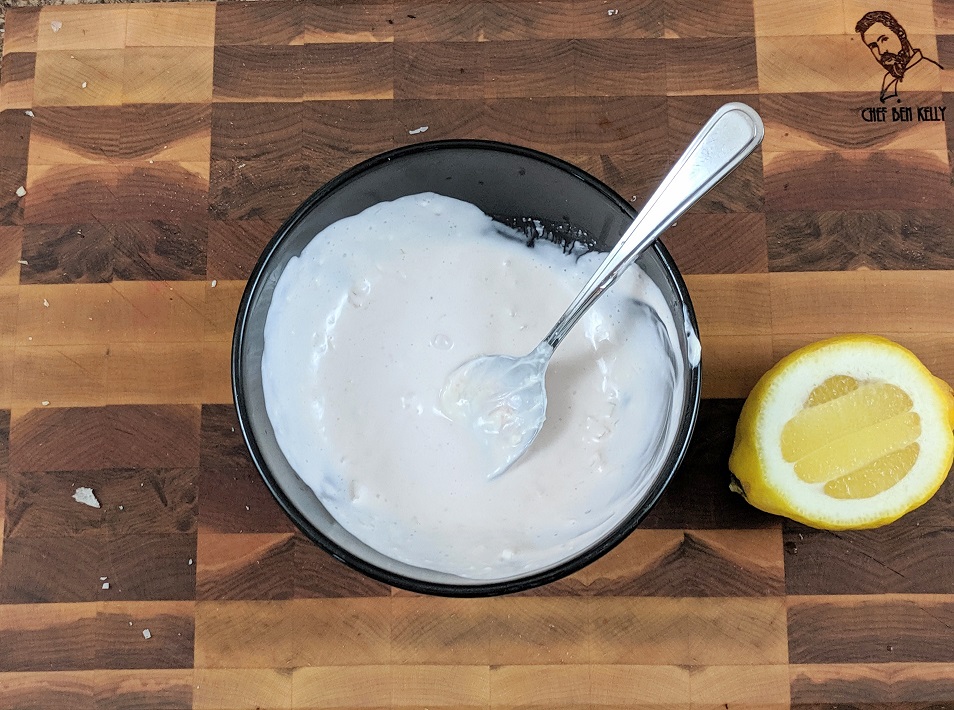
Egg-based dressings are made the same way as basic vinaigrettes. The difference is that an egg is used rather than mustard as the binder. As with a vinaigrette, egg-based dressings benefit from the use of flavoured oils and vinegar. Again, it just comes down to what other ingredients are present in your dressing and your salad.
There is some concern with egg-based vinaigrettes because the egg is used raw. The health department suggests that you pasteurize your eggs first, but no one does this. I think that there is enough acid coming from the vinegar that there isn’t too much worry. Having said that, if you would prefer not to use a raw egg to make a dressing, you can use it instead. If you use mayonnaise as the base, you may have to thin it out with a little more vinegar and then just whisk your flavourings into it. Easy enough.
Some people will use the whole egg for egg-based dressings, and some will just use the yolk. I prefer to use just the yolk. If you are not going to use the egg white, don’t waste it. It can be frozen in a small container and thawed when you want to make a meringue or something like that. Using just the yolk will give me a thicker, creamier dressing than when using the whole egg. You can try both ways and see which one you prefer. The process is the same either way.
One egg yolk can emulsify about one cup of oil. Now, to be fair, egg yolk can emulsify more oil than that, but I find that one cup is kind of the optimal amount. Anything after one cup, and you are risking the structure of your emulsification.
Other than flavoured oils and vinegar, there are lots of things you can add to your dressing to flavour it. Really, just about anything you want. This is where you can get creative. Honestly, add anything you want, from pieces of apple to anchovy, to caramelized onions, to bacon. It really is up to you.
Ingredients
- 1 egg yolk
- 1 c canola oil
- 3 tbsp cider vinegar
- 4 drops of Tabasco sauce
- 1 drop of Worcestershire sauce
- 1 tsp honey
- Salt and Pepper to taste
Instructions
- Place your egg yolk in a medium mixing bowl.
- Using a whisk, beat the egg yolk for a minute.
- Add the vinegar and mix thoroughly.
- While whisking slowly begin to add the oil, just a few drops at a time to begin with.
- Once these initial few drops have been absorbed by the egg yolk you can begin to add the oil in a slow steady stream whisking constantly.
- If you notice that some of the oil is not being absorbed stop pouring the oil and mix the mixture until the oil is absorbed then being to add the oil again.
- Once all the oil has been added and absorbed add the rest of your ingredients and mix them into the dressing.
- Add whatever flavourings you would like. Transfer the dressing to a container, cover, and place in the fridge for twenty minutes to allow the dressing to absorb all the flavours.
- Serve over your favourite salad.
Ingredients
- 2 tbsp Red Wine Vinegar
- 2 tbsp Lemon Juice
- 3/4 cup Canola Oil
- 1 tsp Dijon Mustard
- 1 ea Egg Yolk
- 5-6 drops Fish Sauce or Worcestershire Sauce
- 2 tbsp parmesan cheese
- 2 cloves of pureed garlic
- Salt and Pepper to taste
Instructions
- Combine all the ingredients except the oil in the mixing bowl and whisk together.
- Whisk a few drops of the oil in the vinegar mixture.
- Whisk a few more drops of the oil into the vinegar mixture.
- Add the remaining oil in a slow steady stream while constantly whisking.
- Once all the oil has been incorporated, season the vinaigrette with salt and pepper.
Dairy Based Dressings
I said that there were two main types of salad dressing. This is true, but it isn’t the whole truth. Although the two I’ve already mentioned are the two main ones, there is a third. The third type of salad dressing is diary-based. Dairy-based dressings are generally made from fermented or cultured dairy such as yogurt, sour cream, or buttermilk. The dairy-based dressing that really stands out is Ranch. There are some others, but they are generally one-offs rather than really common.
When using yogurt or sour cream, it really just comes down to thin it out with liquid, adding more acid to it and then flavouring it. Buttermilk is usually used with other bases to add a tart creamy flavour.
Check out this link for my favourite Ranch Dressing Recipe.
Salad Garnish
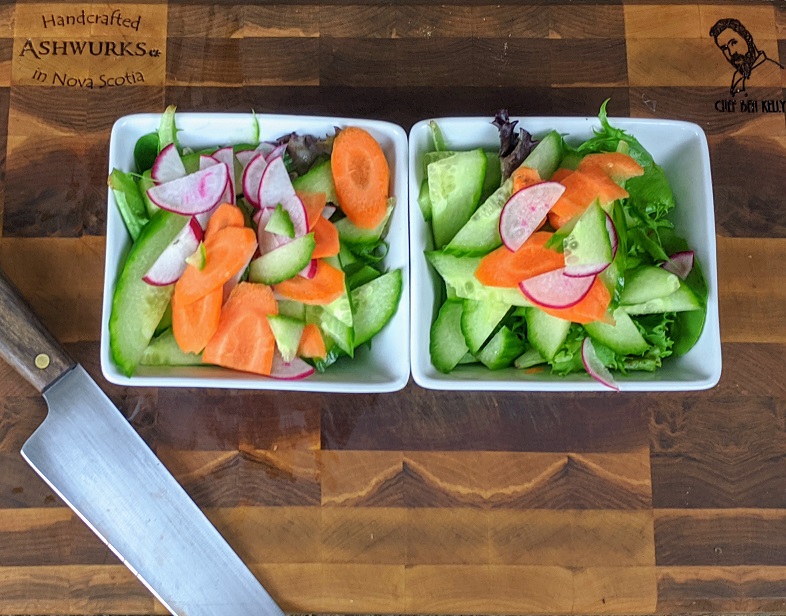
As we saw a little bit when talking about greens, a salad garnish can be just about anything. Fresh vegetables, fresh or dried fruit and berries, cold sliced meats, cooked or smoked seafood, cheese, nuts or seeds. However, just about anything can be a salad garnish that doesn’t mean that everything should be all the time. What I mean by that is when it comes to garnishing a salad, generally less is more.
As far as I know, there aren’t really any hard and fast rules for when what, and how much of something should be added to a salad. Just use your better judgment. If something seems really out of place, probably avoid it. The only other thing I would say about garnish is to make sure that the ingredients you are using are the best quality they can be. There is no hiding mushy tomatoes or sour grapes.
Other Salads
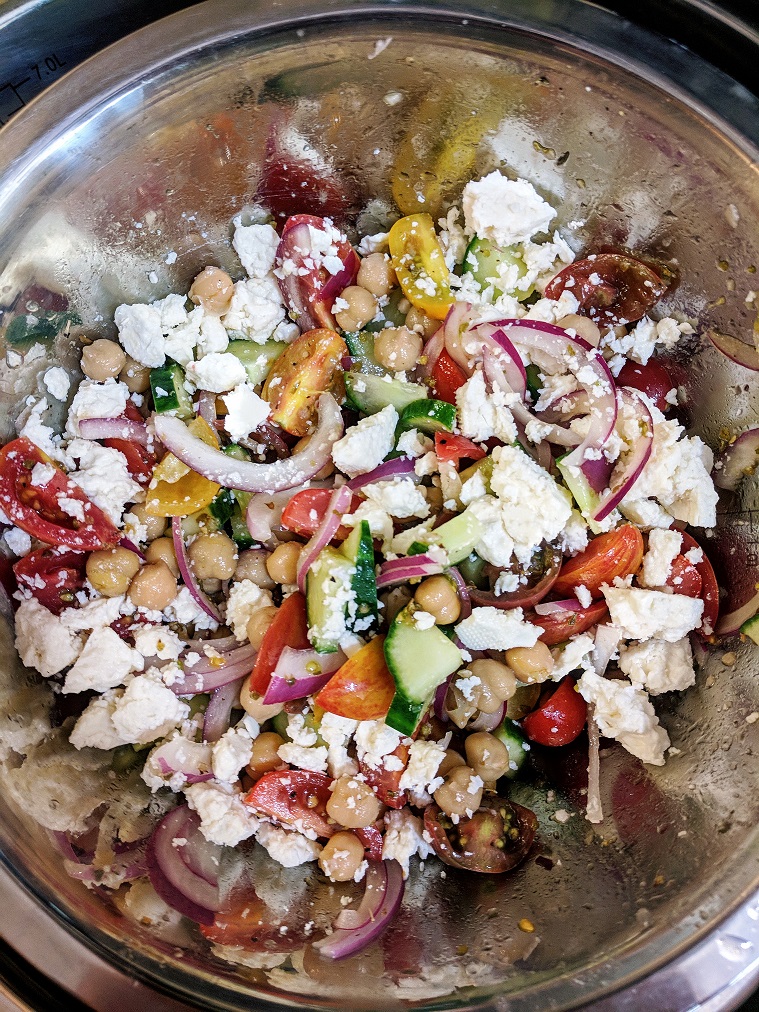
Salad; “a cold dish of various mixtures of raw or cooked vegetables, usually seasoned with oil, vinegar, or other dressing and sometimes accompanied by meat, fish, or other ingredients.”
The Oxford Dictionary
When we think about types of salad that don’t include lettuce, the main one that probably comes to mind, or at least that comes to my mind, is potato salad. Of course, that isn’t the only one. The picture above is for a chickpea greek salad, the recipe for which I will share in a moment. When it comes to makings salads without greens, there really aren’t any rules at all. As the definition above says, a salad can be just about anything. However, I would actually argue that this definition is too narrow. Salads don’t have to be cold. A roasted vegetable salad tossed with arugula can be both hot or cold. Potato salad can be served hot in the French style or cold in the North American style. The point is that anything you want to make into a salad, you can.
All the same, principles apply for these types of salads as they do for green salads. Don’t overpower your main ingredient with dressing or garnish. Don’t make a soggy salad. You can even use all of the same dressings. There isn’t too much else that I can say about the differences and similarities between these types of salads, so let’s actually just look at two specific examples: potatoe Salad and Chickpea Greek Salad.
Potato Salad
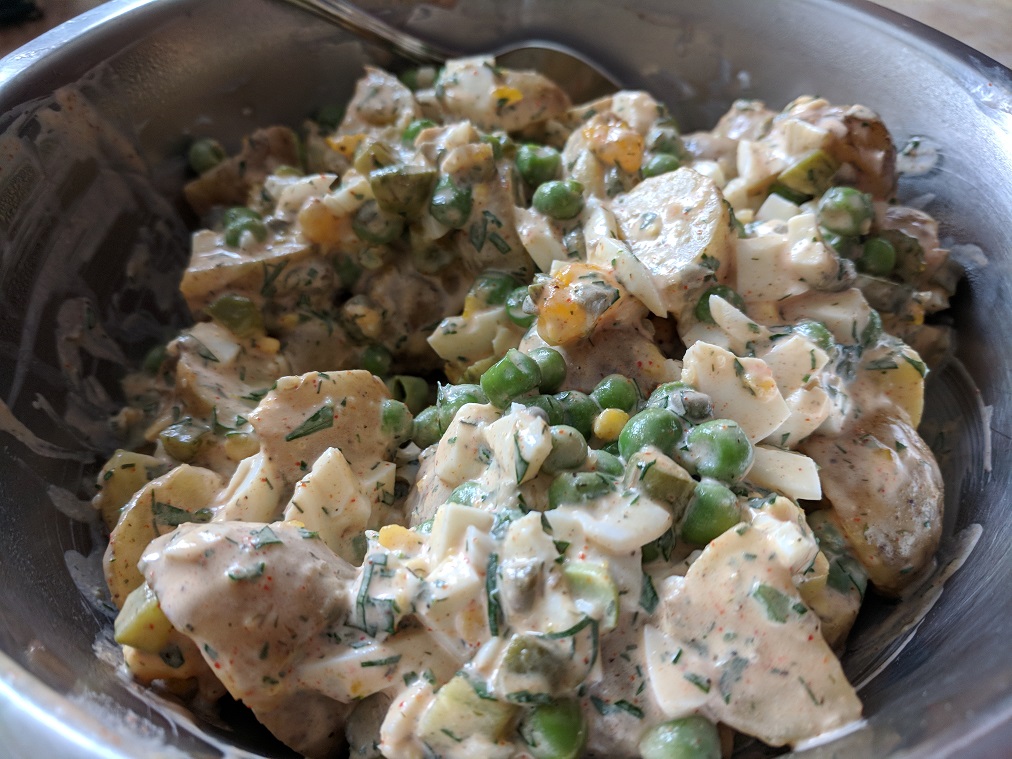
Potato salad is one of those ubiquitous barbecue and potluck sides that everyone makes. And somehow, everyone thinks they make the best version of it. But if we’re honest, a lot of versions of potato salad are completely terrible. All too often, it just tastes like mayonnaise with a bit of raw onion and potato mixed in. Not very appetizing. But, what makes a good potato salad and what makes a bad one? Let’s take a look.
The do’s and don’ts of potato salad
When making potato salad, there are a handful of things that people often get wrong and also a handful of things that people often get right. The first and most important part of thinking about when making a potato salad is, of course, the potato.
All too often, people will use a variety of potatoes that is watery or mealy. These tend to become waterlogged if overcooked. They also fall apart easily, leaving you with a bowl of mashed potato salad which sounds pretty gross. Generally, a waxy variety of potatoes is best for potato salad. Potatoes like Yukon gold, fingerlings, new potatoes or red bliss are all examples of this. All of these hold their shape well when cooked. This gives texture and body to potato salad.
It is always best to cook the potatoes a day ahead of time and cool them in the fridge. This allows the starches time to set and the potatoes to cool. Plus, it is just less work on the day, and that’s always a good thing.
We’ve talked about potatoes, but what else should go in our potato salad? What about other ingredients?
Other potato salad ingredients
Other common potato salad ingredients include eggs, peas, onion, herbs and bacon. Let’s take a look at each and see what our options are and whether we should use them or not.
In all honesty, whether you put eggs in your potato salad or not comes down to taste rather than right or wrong. I think yes, but that’s because I really like eggs. I find that they add a nice textural change to the potato salad—also, the yolk, even when hard-boiled, can help thicken the sauce. If you are going to use eggs in your potato salad, cook them a day ahead to allow them to cool fully.
I also like to add onions to my potato salad. If you generally add chopped white or red onion to your potato salad, that’s fine. But, maybe mix it up once in a while. Chopped green onion or chives make a great addition to any potato salad. Their flavour is more mellow than white or red onion, and so they have less of a tendency to overpower the other ingredients in the salad. If you choose to add red or white onion to your potato salad, dice them as fine as you can. This will lower their impact and make for a more pleasant eating experience.
Adding fresh herbs to your potato salad is an easy and delicious way to elevate it a little bit. A little parsley, dill, and even tarragon and mint can go a long way. This simple act of adding a few chopped fresh herbs will have such a massive impact on the overall flavour of the salad. I’m serious. You won’t believe the difference a few herbs can make.
Should you put bacon in a potato salad? It depends. I am absolutely not opposed to putting bacon in potato salad as long as it is done for the right reasons. Are you putting bacon in the salad because it adds a smoky, salty element that the salad is missing? Does it add a little crunch that would add to the textural experience? Does it add to the nuance of the potato salad? Or, are you adding bacon to the salad because it’s bacon and bacon is supposed to make everything better?
Over the past decade or so, there has been a trend to add bacon to everything. You’ve heard that bacon makes everything better. Wrong! Don’t get me wrong, and I love bacon. What I don’t love is adding unnecessary ingredients to dishes just for the sake of adding them. Also, adding bacon to a mediocre potato salad does not make it better. It just makes it a mediocre potato salad with bacon in it. Use bacon when it adds to the potato salad, not just because it’s bacon.
I really like adding peas to potato salad. This is in part because my mother always did and partially because I love peas. Should they be in every potato salad? No! I usually only use them when I am recreating my mother’s potato salad or making a version with mint and/or dill in it. Peas go really well with both of these flavours.
I do find that peas add a nice fresh sweetness to the salad. It is just essential that if you are going to use peas, not overcook them. When done right, they add vibrant green colour with a fresh sweet flavour that pops in your mouth. When done wrong, they add a greyish green colour and bland flavour along with a mushy texture. Like bacon, add peas only when it makes sense, not just because they are peas.
The sauce
If the potatoes are the most important part of a potato salad, the sauce comes in at a very close second. There are many variations on potato salad dressing. Mine changes, as I’m sure yours does, based on the other ingredients present in the salad. But mostly, I use a mayonnaise base. Sometimes vinegar or mustard is the base as well, but most often, it is mayo.
I will often take, let’s say, 1/2 a cup of mayonnaise and add 1 tbsp of mustard. This could be regular yellow mustard, Dijon, or grainy mustard. I add 1-2 tbsp of vinegar. This could be red or white wine vinegar, white distilled vinegar, sherry vinegar, or even cider vinegar. I add 1-2 tsp of sugar or honey. I also add a few chopped gherkins or dill pickles which adds a nice crunch and flavour. I finish it with a little paprika, either smoked or sweet. I taste and adjust the seasoning as needed with salt and pepper and add it to the salad.
Making potato salad
I’m not going to give you an actual recipe for this because you don’t need one. But here is a rough idea, Boil about 1 lb of waxy potatoes. Let cool. Dice the potatoes and combine with a couple of boiled eggs, chopped green onions, 1-2 tsp chopped fresh dill, 1-2 tsp chopped fresh parsley, 1-2 chopped gherkins. Add in some just boiled and cooled peas, along with the dressing I described above. Done and done.
Finally, here is the recipe for the Chickpea Greek Salad in the picture above. You can read the full post by clicking this link.
Ingredients
- 1 can Chickpeas, drained and rinsed
- 1 baseball sized Red onion, thinly sliced
- 1/2 ea Cucumber, diced
- 1/2 pint Cherry Tomatoes
- 1/4 cup Kalamata Olives
- 1/2 cup Crumbled Feta (or more)
- 1 tbsp Chopped Fresh Parsley
- 4 ea Mint leaves, thinly sliced
- 2 tbsp Red Wine vinegar
- 1/2 tsp Dried Oregano
- 1/2 tsp Mustard Powder
- 1 tsp Honey
- 1 clove Garlic, minced
- 1/4 cup Olive Oil
- to taste Salt and Pepper
Instructions
- In a small bowl combine the vinegar, honey, garlic, mustard powder, and oregano. Slowly whisk in the olive oil until fully incorporated.
- In a separate bowl combine all the other ingredients.
- Pour the dressing over the salad and toss to coat.
- Season to taste with salt and pepper.
Conclusion
Salads are a great way to add greens and fresh fruit, and vegetables to your diet. They can be as simple or complex as you want. You can use homemade or store-bought dressing, and you can dress it up however you want. Experiment, play around and have fun. To me, that is what salads are all about.
I hope you’ve enjoyed this part of my free basic cooking course. You can find last week’s lesson all about soup right here. Next Wednesday we will be looking at some basic meals that everyone should know how to make. Stay tuned, and thanks for reading!
A note for regular blog readers
Regular readers of the blog will notice that this post is late by one day and two hours. I apologize for the delay, and I hope you understand. Also, as this is a long Easter weekend, I have decided to take a few days off to spend time with my wife and son and get our lives organized after our move. That means there will be no post tomorrow (Friday) or Monday, but I will be back on Wednesday. There will still be Dinner with Ben on my Facebook page at 6 pm Monday, so tune in for that.
Other than all that, I hope that you have a great Easter Weekend and stay safe. Oh, and if you have any food-related questions this weekend, please feel free to contact me. I’m always happy to help.
…One more thing… if you are wondering how Easter will work this year with all the social distancing measures and everything, check out the segment I did on CTV this week here.
See you all soon!

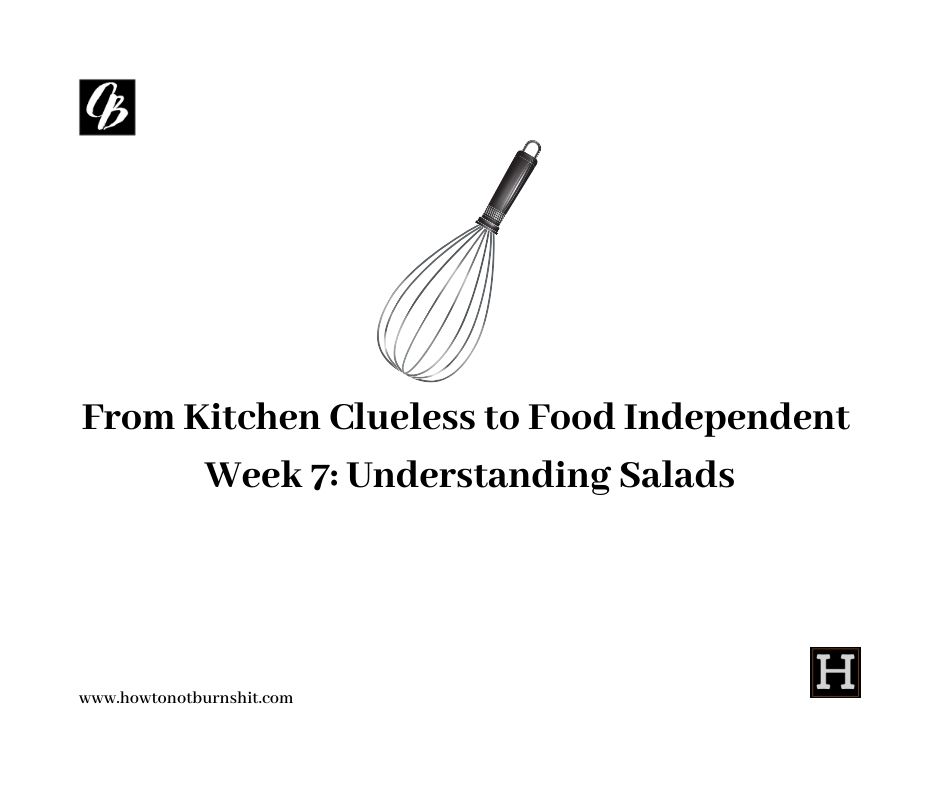
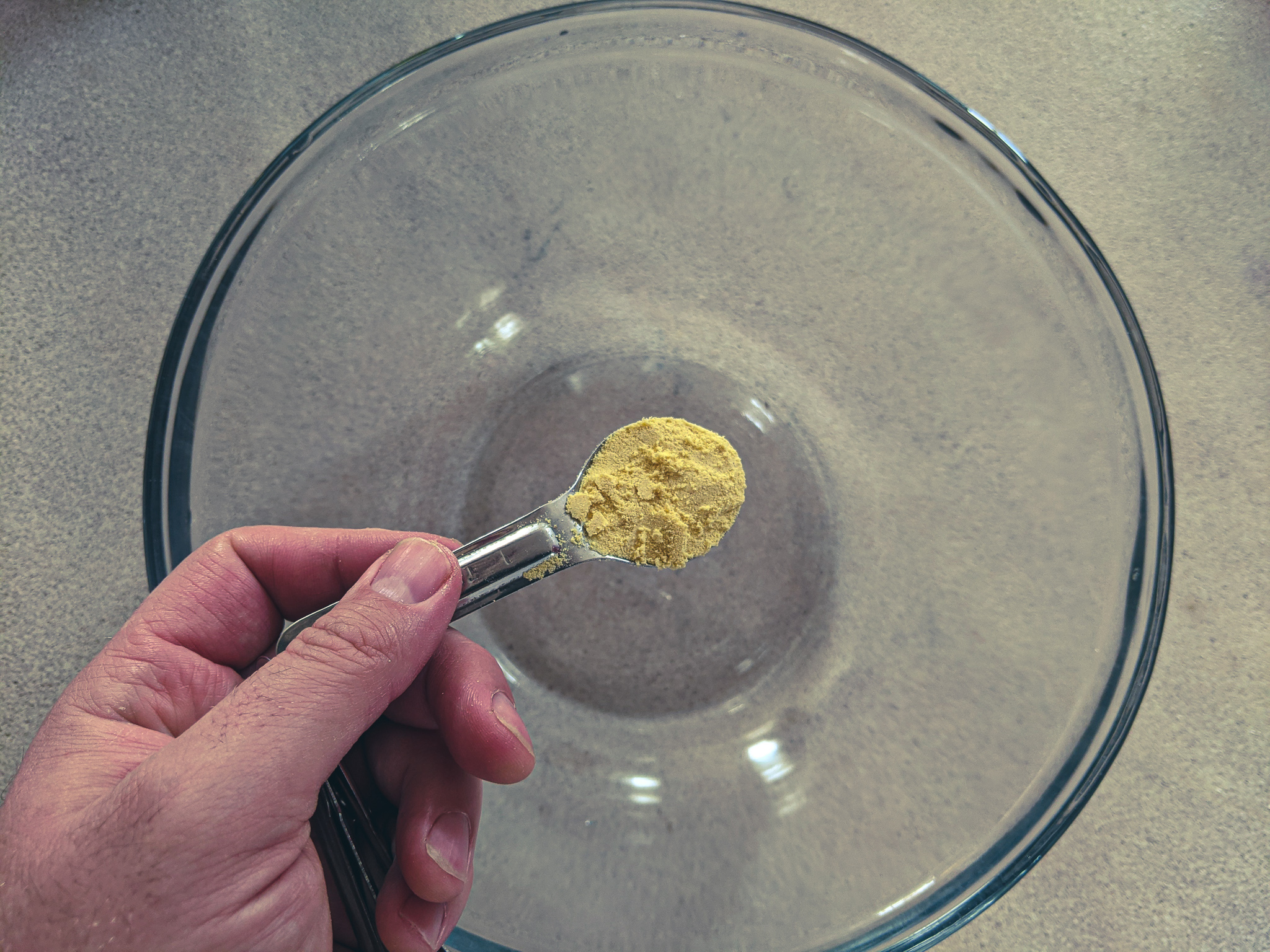
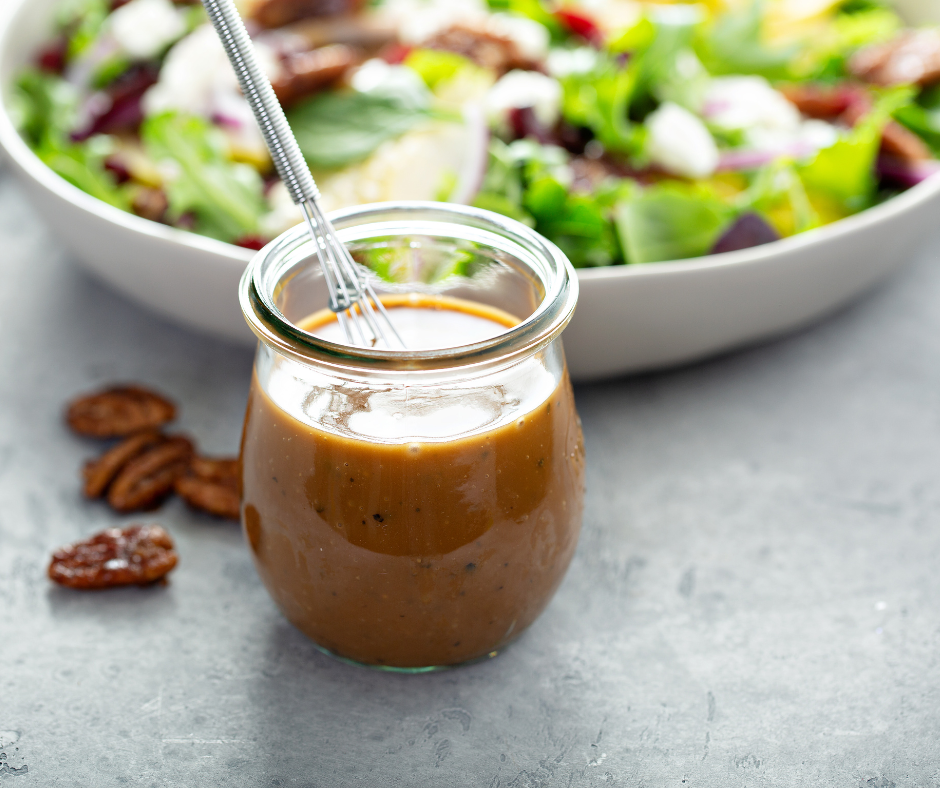
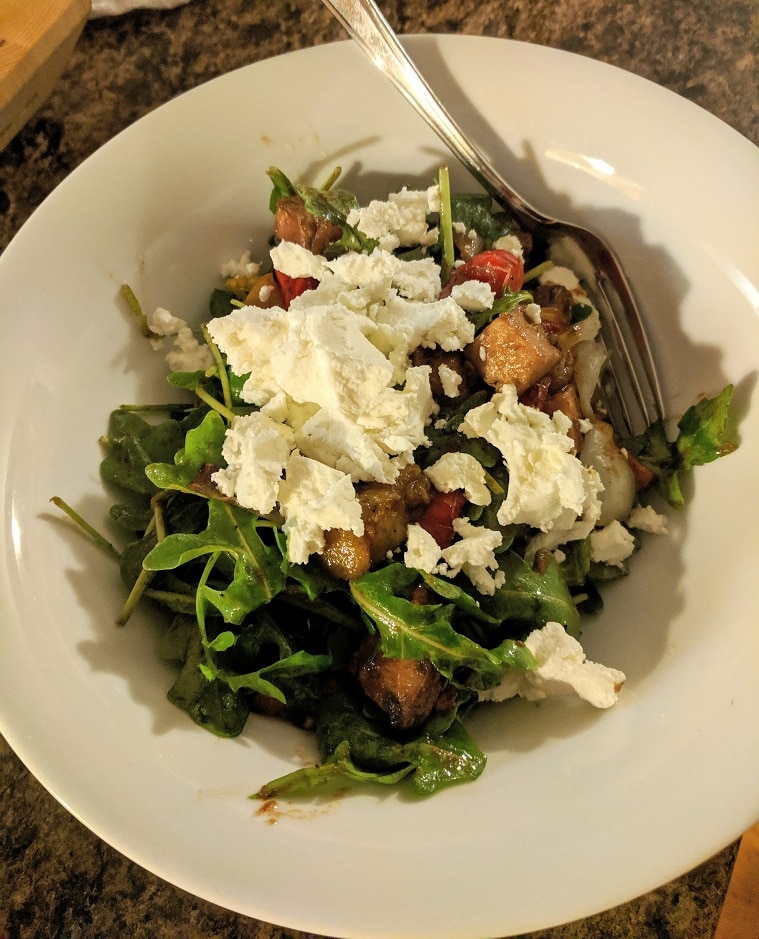
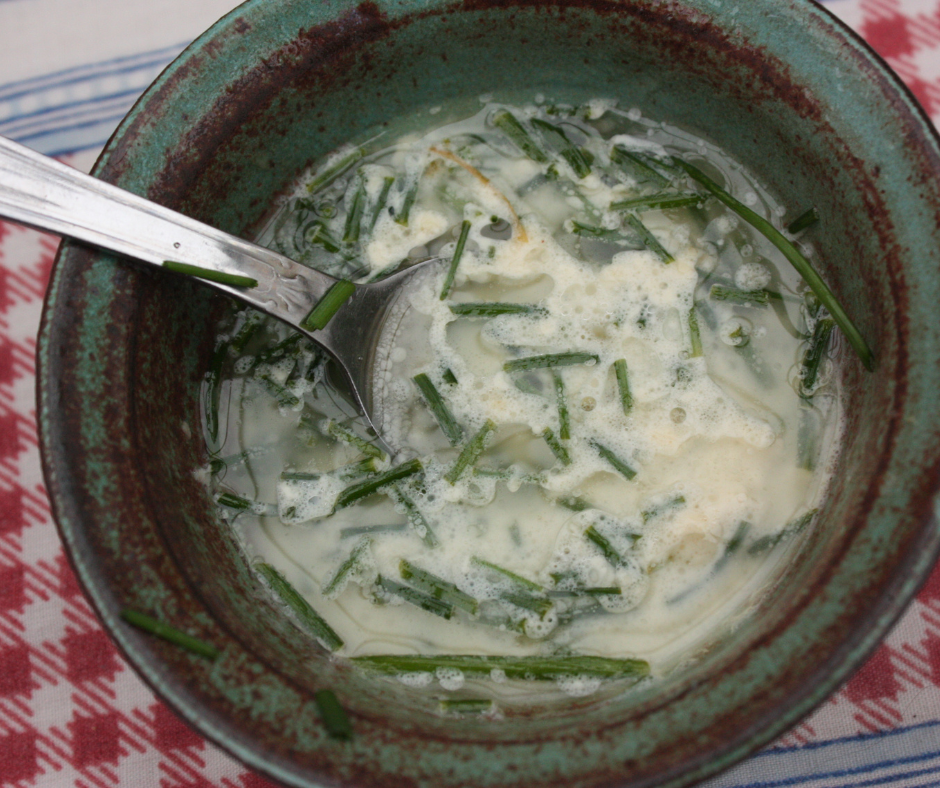

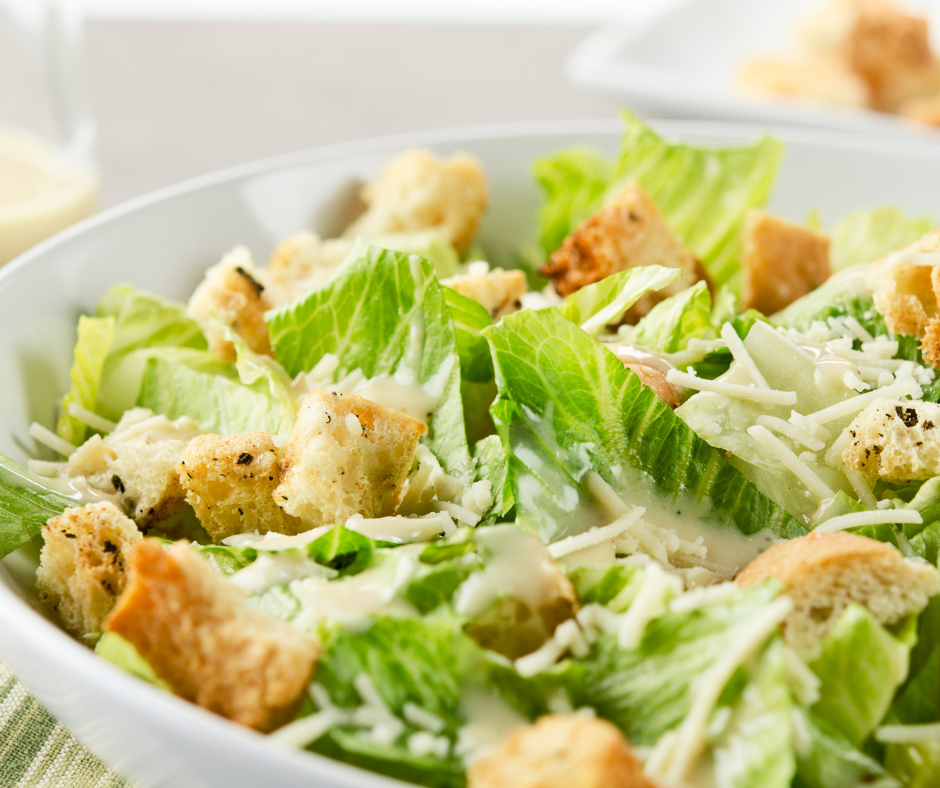
0 Comments